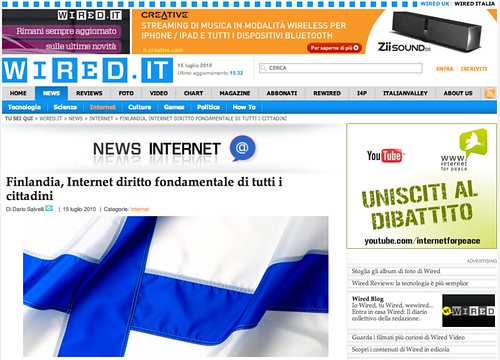Kristi Hines (@kikolani) published a nice list of “The 20 most influential people in social media” and Simon Kemp (@eskimon) did a good job in this thread reminding us all that since more than 80% of the world’s social media users live outside of the US it would be a good idea to add some other influential names beyond America’s shores to the list.
Brava Kristi and bravo Simon. So far so good.
Krishna De is an outstanding communicator and a long time digital-friend. She suggested that I could be considered as an influencer in Finland. First of all, I’d like to thank Krishna for mentioning me as an influencer. I tend to work with my “head down”, putting all the passion and commitment I have into everything I do in this industry. Ultimately, my greatest reward is to see a satisfied smile on the face of whoever I’m working with because what we did together meant something to them and made a difference. So, when someone points me out for any reason related to what I do, I feel honored.
Secondly, though, after reading the following comment I felt that I should probably clarify my position a bit and give out a little bit more information about what I do since I have been – and still am – very involved in the Finnish social media and technology space…

If you can’t see/load the picture above:
Jaana Nyström – +Krishna De New York in Finland now? 🙂 +Andrea Vascellari has nothing to do with Finland, I think? Must be an error this…
Not wanting to promote myself but I’m the “Google+ envoy in Finland”, according to the local Google Industry Manager… At least I’m diligent! 😀
For those of you who have been connected with me for a while now, you are probably aware that my company and I work on international projects, but for the sake of this thread on G+, here’s my reply which just focuses on some of the ways I’ve been “influential” in Finland.
Hi Everyone,
Hi Jaana,
Jaana I’ve been living and working in Finland since 2005 and I’ve been researching and studying the Finnish information society cluster since 2002.
In Finland, I’m currently running several projects for national and local governments, regional development, B2B, B2C, pharma and education. If you have a look at the people/connections we commonly share here on Google+ you’ll notice that I’m well-networked with the Finnish social media sphere 😉
I’m often a contributor to various international podcasts sharing my point of view from the Finnish perspective (but not only, since I have Italian-Canadian roots) specifically in the fields of PR, marketing and communications. In addition to that, since public speaking is part of what I do, I’ve been invited to speak at some of the largest conferences in Finland i.e. Mindtrek, ITK, etc. If you quickly browse through my Linkedin profile you’ll notice that I’ve been invited as an official blogger to many industry conferences, such as the LeWeb, Web 2.0 Expo, etc. and I’ve also represented Finland at two editions of the Bloggers World Forum respectively in Bucharest and Vienna. So these are most likely some of the reasons why you’ll find a fairly large group of people worldwide referring to me when they think of Finland – it’s the same for me when I think of Ireland and 2 names immediately come to mind Krishna De (@krishnade) and Bernie Goldbach (@topgold).
On the other hand, leading an international digital strategy agency requires me to travel quite often, but my home is currently in Finland. My team and I work across 4 continents and we recently opened a new office in New York (NYC) so the information you see on my Twitter profile refers to that. I hope this explains and clarifies everything.
Andrea @vascellari
– Good to meet you, Jaana. Andrea
